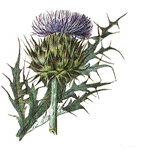Papers in the Biological Sciences

Svata M. Louda Publications
Document Type
Article
Date of this Version
10-2001
Abstract
Could insect herbivory be a significant factor influencing the population density of some native plants? I first asked this question in 1971, and this led me to the research that was acknowledged by the 1982 Mercer Award. The question occurred to me in the context of studying the controversy over trophic structure dynamics (Hairston et al. 1960, Murdoch 1966, Ehrlich and Birch 1967, Slobodkin et al. 1967). At the time, herbivory was not considered an important factor affecting either the abundance or the distribution of plant populations.
In my experiments (1973-1978), I compared seed production and subsequent seedling and juvenile densities for plants on which I treated inflorescences with insecticide vs. with water, for both H. squarrosa (Louda 1982 a,b) and I. veneta (Louda 1983). These experiments, plus my data on the survival of older plants and my finding that there was essentially no permanent seed bank for these two species, allowed me to quantify the demographic consequences of floral herbivory for both species. By doing the same exclusion experiment for each species at multiple sites along the coast-to-mountain gradient, I also was able to quantify the spatial variation in the intensity of floral herbivory, and evaluate its effects on plant densities along the environmental gradient.
Several of my results continue to challenge accepted generalizations in plant ecology. First, insects, rather than resources, limited the number of viable seeds produced by both H. squarrosa (Louda 1982 a,b) and I. veneta (Louda 1983) at all of the sites along the gradient, challenging the usual assumption that resources for seed maturation limit the number of seeds produced.
Second, the number of viable seeds after predispersal seed predation, rather than the number of microsites for establishment, limited the density of the seedling recruits (Louda 1982b), at all sites along the gradient for both H. squarrosa (Louda 1982a) and I. veneta (Louda 1983). These data were the first to quantify the effect of flower- and seed-feeders on the number of seedlings that established under natural conditions, and they challenge the usual assumption that the number of microsites generally limits the number and density of seedlings that establish.


Comments
Published in Bulletin of the Ecological Society of America, Vol. 82, No. 4 (Oct., 2001), pp. 229-231. Copyright 2001 Ecological Society of America; used by permission.